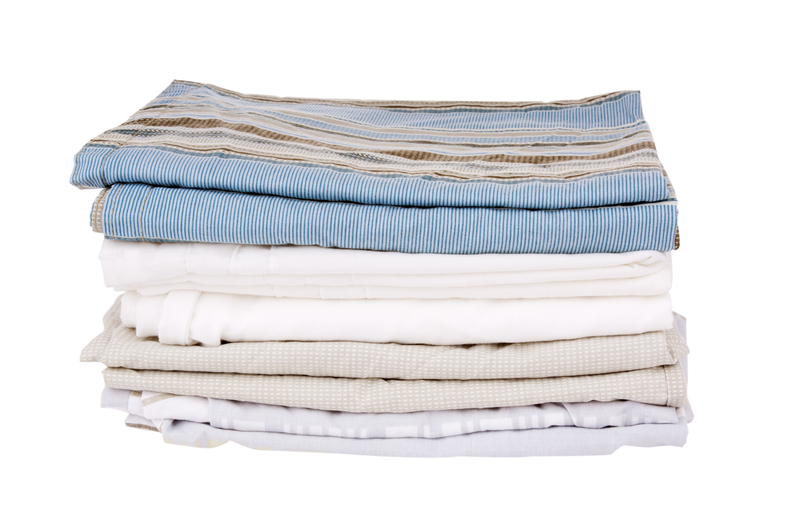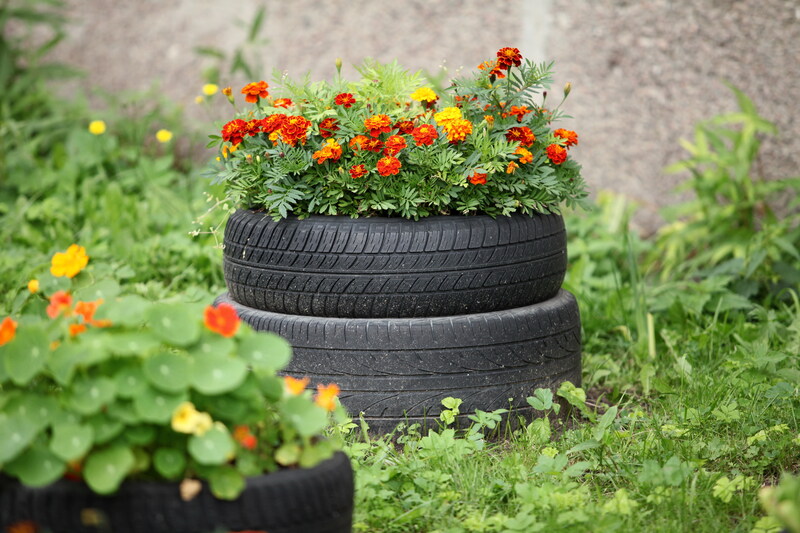Mastering Safe Disposal Methods for PPE Waste: A Comprehensive Guide
In today's increasingly safety-conscious world, PPE (Personal Protective Equipment) plays a vital role in safeguarding health in healthcare, industry, and even the general public. However, the surge in PPE use, particularly after the COVID-19 pandemic, has led to a new challenge: effective and safe disposal of PPE waste. Whether it's disposable masks, gloves, face shields, or protective gowns, learning the best practices for managing this special waste stream is critical. This guide will provide an exhaustive overview of safe disposal techniques for PPE waste, best practices, legal considerations, and innovative solutions for a cleaner, safer environment.

Why Safe Disposal of PPE Waste Matters
PPE waste isn't like ordinary trash. Used items can be contaminated with pathogens, chemicals, or other hazardous materials. If not handled correctly, the discarded PPE can pose health risks to waste handlers, pollute the environment, and contribute to microplastic problems in oceans and landfills.
- Prevents disease transmission by safely containing potentially infectious materials.
- Reduces environmental impact by preventing microplastics and toxins from entering soils and water sources.
- Compliance with regulations ensures organizations avoid legal troubles and contribute to public health.
Understanding Different Types of PPE Waste
Not all PPE waste is created equal. Identifying categories helps determine suitable disposal methods.
Common PPE Waste Types
- Disposable masks and respirators
- Gloves (latex, nitrile, vinyl)
- Face shields and eye protection
- Gowns and coveralls
- Shoe covers and hairnets
Hazard Classifications
- Infectious waste: PPE contaminated with blood, bodily fluids, or pathogens; must be treated as biomedical waste.
- Non-infectious waste: PPE used in non-healthcare settings or non-contaminated materials; usually destined for general waste streams.
- Chemically contaminated waste: PPE exposed to hazardous chemicals; requires specialized handling.
Fundamental Principles of PPE Waste Disposal
Safe PPE waste management hinges on a few core principles:
- Containment: Use leak-proof, clearly marked bags or bins to segregate PPE waste from regular trash.
- Minimization: Only use disposable PPE when absolutely necessary and opt for reusables when safe and feasible.
- Segregation: Always separate contaminated, non-contaminated, and chemically soiled PPE for proper treatment.
- Treatment: Decontaminate or destroy hazardous PPE to inactivate pathogens or neutralize chemicals.
- Final disposal: Direct treated PPE waste to suitable landfill, incineration, or recycling routes.
Step-by-Step Safe Disposal Methods for PPE Waste
1. Collection and Containment
The first step in PPE waste disposal is collecting used items securely. Here's how:
- Use color-coded bins (e.g., yellow for clinical waste, red for infectious waste) to avoid confusion.
- Avoid touching the exterior of used PPE. Remove items carefully and place them directly in bins.
- Seal bags tightly when full. Avoid compressing PPE as it may force contaminants into the air.
- Label containers with the content type and date of collection for traceability.
*Tip: Place disposal bins near PPE removal points to reduce handling and minimize cross-contamination.*
2. Segregation of PPE Waste Streams
Segregation is critical in mastering PPE waste management. Separate:
- General waste PPE: Used in non-infectious, non-chemical settings (routine public use).
- Hazardous PPE: Used in healthcare or industrial areas where contamination is likely.
- Recyclable PPE: Check locally for specialized recycling programs for masks or gloves.
*Tip: Never mix general and infectious PPE waste, as it complicates safe disposal and increases risk.*
3. Handling and Transport
Moving PPE waste poses exposure risks. Always:
- Train staff in correct handling procedures and provide appropriate PPE for waste handlers.
- Use dedicated trolleys or carts, cleaned regularly, for intra-facility transport.
- Minimize manual handling to reduce risk and avoid accidental needle sticks or cuts if sharp items are present.
4. Treatment of Contaminated PPE Waste
Before final disposal, PPE waste--especially infectious or chemical--must be neutralized.
Common Decontamination Methods:
- Autoclaving (Steam Sterilization): Effective for most biological contaminants; subjects waste to high-pressure steam.
- Chemical Disinfection: Soaks PPE in appropriate disinfectants (e.g., bleach) before disposal.
- Microwave or Thermal Treatment: Heats waste to destroy pathogens (mainly used in hospitals).
Note: Always comply with local regulations regarding treatment specifications. Not all PPE types are suited for all treatment methods--for example, meltdowns can occur with some plastics during autoclaving.
5. Final Disposal Options
After treatment, PPE waste disposal methods include:
- High-temperature Incineration: The gold standard for infectious or heavily contaminated PPE. Destroys both pathogens and most toxins.
- Engineered Landfill: For non-infectious or treated PPE waste; use lined landfills to prevent leachate.
- Specialized Recycling: Select programs now collect and process certain PPE types (e.g., masks, face shields) into plastic lumber or other products.
Regulations and Guidelines Governing PPE Waste Disposal
Mastering PPE waste management means understanding and following the rules. Key references include:
- World Health Organization (WHO): Comprehensive guidelines for healthcare PPE disposal.
- Centers for Disease Control and Prevention (CDC): US-specific handling instructions for COVID-19 and other hazardous wastes.
- Occupational Safety and Health Administration (OSHA): Workplace safety mandates for managing contaminated PPE.
- Local Environmental Agencies: Most countries have their own laws; check for required record-keeping, permitted disposal facilities, and reporting.
Key Legal Compliance Steps:
- Stay updated on all regulations concerning PPE waste categorization and reporting.
- Ensure correct labeling, manifest, and documentation for medical or hazardous PPE waste shipments.
- Provide regular staff training and maintain written protocols for waste handling.
Green Innovations: Sustainable PPE Waste Management
With growing environmental awareness, eco-friendly options for PPE waste disposal are on the rise. Here's how organizations are reducing their PPE footprint:
- Reusable PPE: Opting for washable, long-lasting masks and gowns wherever possible.
- PPE Recycling Programs: Partnering with companies that collect and process PPE for recycling.
- Energy-from-Waste: Incinerating PPE in facilities that capture energy for heating or electricity.
- Biodegradable PPE: Using products made from plant-based or compostable materials to reduce landfill and ocean pollution.
Did you know? Some companies now offer take-back schemes for masks and gloves, providing special collection bins for offices and hospitals. Check if such services are available in your location to close the PPE recycling loop!
Challenges and Common Mistakes in PPE Waste Disposal
Pitfalls to Avoid
- Improper mixing of PPE waste with general trash, leading to contamination and increased disposal costs.
- Insufficient staff training, causing accidental exposures or environmental releases.
- Neglecting local regulations, risking fines and harming organizational reputation.
- Poor bin placement, resulting in overflow and increased contact hazards.
How to Overcome These Challenges
- Training: Regularly instruct all PPE users and waste handlers on up-to-date safe disposal protocols.
- Visual aids: Use posters and infographics reinforcing color coding and waste segregation.
- Audit programs: Evaluate disposal practices periodically to identify and correct problems.
Role of Individuals and Organizations
Safe PPE waste disposal is not just the responsibility of hospitals and industry. Everyone has a part to play:
- Individuals: Dispose of masks and gloves in designated waste bins, avoid littering, and never flush PPE down toilets.
- Companies and Employers: Install sufficient PPE waste receptacles, distribute disposal guidelines, and foster a safety culture.
- Municipalities: Ensure adequate collection and treatment infrastructure to handle increased PPE volumes.

FAQs on Safe PPE Waste Disposal
Can disposable face masks be recycled?
While traditional recycling systems do not accept most disposable masks (due to material composition and contamination risk), some specialized companies offer mask recycling programs. Check locally for collection points or mail-back schemes.
What should I do if my workplace doesn't provide PPE waste bins?
Advocate for proper waste management facilities. Share this guide with management or your safety officer and stress the legal, health, and environmental benefits of correct PPE waste handling.
How long does PPE waste remain infectious?
Pathogens can survive on PPE surfaces from hours up to several days, depending on material and environmental conditions. Immediate containment and disposal are always best practices.
Conclusion: Mastering Safe PPE Waste Disposal for a Safer Tomorrow
Mastering safe disposal methods for PPE waste is essential for protecting public health, reducing environmental harm, and maintaining regulatory compliance. By understanding the correct procedures for collecting, segregating, treating, and disposing of PPE, everyone--from individuals to multinational organizations--can play their part in responsible waste management.
As PPE use continues to rise, adopting forward-thinking approaches like recycling, reusables, and energy recovery will ensure that we defend not just ourselves, but also the planet. Take action today: review your PPE disposal practices, educate others, and champion sustainable solutions within your community.
For further information, always consult national waste management authorities and updated guidance from health organizations. Together, by mastering PPE waste disposal, we build a safer, cleaner world.
